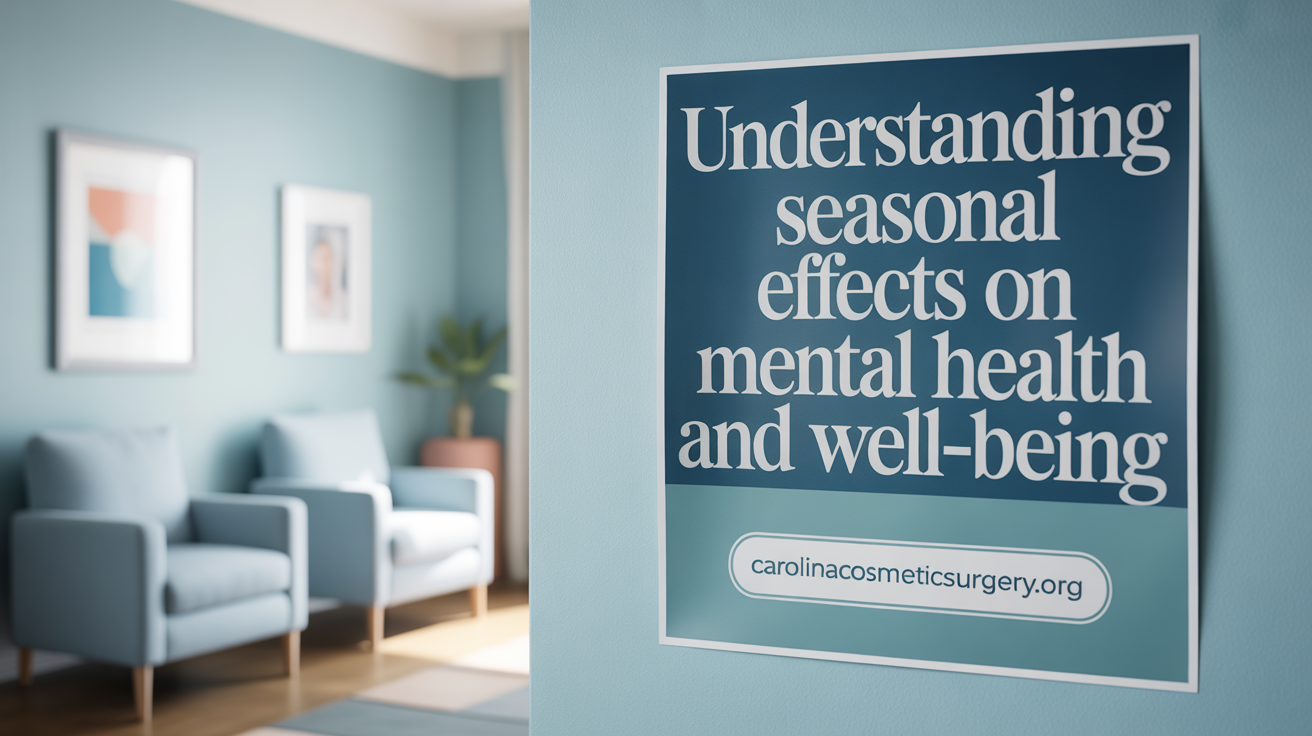The Seasonal Cycle and Its Influence on Recovery
Recovery from addiction and mental health challenges is a continuous journey that does not occur in isolation from the world around us. One of the often overlooked but deeply influential factors in this process is the natural rhythm of seasonal changes. From the shorter, darker days of winter to the bright, energizing light of spring and summer, seasonal shifts can profoundly affect mental health, mood stability, cravings, and ultimately, the success of recovery efforts. This article explores how seasonal variations impact recovery through biological, psychological, and environmental lenses, identifies triggers and vulnerabilities, and offers practical coping strategies to navigate these changes effectively.
Seasonal Changes and Mental Health: Biological and Psychological Dimensions

How do seasonal changes affect mental health?
Seasonal changes can have a significant influence on mental health, often through the development or exacerbation of conditions like Seasonal Affective Disorder (SAD). This disorder is characterized by recurrent depression that aligns with specific times of the year, most notably in fall and winter. Symptoms include persistent feelings of sadness, hopelessness, social withdrawal, irritability, and physical symptoms such as changes in sleep and appetite. In winter, individuals may experience oversleeping and overeating, while summer or spring SAD can manifest as insomnia, restlessness, and decreased appetite.
The underlying causes involve decreases in sunlight exposure, which influence brain chemistry through disruptions in serotonin levels, melatonin production, and vitamin D synthesis. Reduced sunlight can diminish serotonin, a neurotransmitter critical for mood regulation, leading to feelings of depression. Meanwhile, alterations in melatonin, a hormone that controls sleep and wake cycles, can cause sleep disturbances and fatigue. Vitamin D deficiency, resulting from less UV exposure, further impairs mood regulation.
Effective management often includes light therapy, psychotherapy, medication, and vitamin D supplementation. Recognizing these seasonal influences allows for early interventions, helping individuals maintain emotional stability and avoid setbacks in mental health. Overall, understanding the biological and psychological impacts of seasonal change assists in crafting tailored treatment approaches, promoting well-being throughout the year.
What physical and psychological symptoms can the body experience during seasonal transitions?
During the shift from one season to another, the body often exhibits a variety of physical and psychological signs of adjustment. Physically, individuals may feel exhausted, weak, or complain of gastrointestinal disturbances, such as bloating or discomfort, and may experience general malaise. Such symptoms reflect the body's efforts to adapt to environmental and atmospheric changes, including altered temperatures, humidity, and sunlight.
Psychologically, common symptoms include increased anxiety, irritability, difficulty sleeping, or drowsiness. These reactions are closely linked to fluctuations in neurotransmitters like serotonin and melatonin, which regulate mood, sleep, and alertness. Hormonal shifts and changes in circadian rhythms further influence these symptoms. Additionally, intestinal dysbiosis, or imbalance in gut bacteria, can contribute to gastrointestinal discomfort and immune challenges, impacting overall health.
Supporting the body's adaptation involves strategies like maintaining balanced nutrition, engaging in regular physical activity, ensuring sufficient sleep, and possibly taking probiotics to improve gut health. Recognizing these signs early allows individuals and health practitioners to implement preventive measures, reducing discomfort and promoting resilience during seasonal changes.
Resources for further information
For more detailed information on the biological causes and symptomatic patterns of Seasonal Affective Disorder, consult resources from organizations like NIMH and SAMHSA, which provide comprehensive guides on mental health management related to seasonal and environmental factors.
Seasonal Triggers and Risks: Effects on Addiction and Risk of Relapse

How do seasonal changes influence the risk of mood relapse during recovery?
Seasonal transitions can markedly increase the likelihood of mood relapse among individuals in recovery, owing to both biological and environmental factors. Reduced sunlight during autumn and winter seasons results in lowered serotonin levels—a neurotransmitter essential for mood stability—and disrupts circadian rhythms, which regulate sleep-wake cycles. This disruption often leads to symptoms of Seasonal Affective Disorder (SAD), such as low energy, feelings of sadness, and increased sleep or appetite, all of which can trigger substance cravings as individuals attempt to self-medicate emotional discomfort.
Moreover, behavioral shifts during seasonal changes, including social withdrawal, oversleeping, and overeating, can deepen feelings of depression or anxiety. For people with a history of depression or SAD, these patterns further compromise emotional resilience. The decrease in sunlight also affects vitamin D production, linked to mood regulation, compounding the risk.
Recovery requires proactive strategies such as light therapy, psychotherapy, medication, and lifestyle adjustments. By maintaining routines and seeking support, individuals can better manage these fluctuations, lowering the chance of mood relapse. Recognizing seasonal patterns and preparing in advance are essential steps toward sustaining sobriety and emotional health during times of environmental change.
Biological, Psychological, and Environmental Factors Interplaying in Seasonal Recovery Challenges

What biological, psychological, and environmental factors contribute to seasonal impacts on mental health and recovery?
Seasonal changes intricately affect mental health and the recovery process through various interconnected influences. Biologically, fluctuations in sunlight exposure trigger changes in hormone levels such as melatonin and serotonin. Shorter days during fall and winter reduce sunlight, leading to decreased serotonin, which is linked to mood regulation, and an increase in melatonin, often associated with sleep and lethargy. These shifts can contribute to Seasonal Affective Disorder (SAD), characterized by symptoms like low energy, depression, and cravings.
Psychological responses to seasonal variations also play a significant role. The anticipation of spring or the gloom of winter can alter motivation, mood, and behavior. Social patterns shift with seasons; holidays and longer evenings might evoke nostalgia or stress, influencing emotional well-being. Disrupted routines and lower physical activity levels during colder months may compound feelings of isolation or hopelessness.
Environmental factors further influence mental health and recovery, including weather patterns, pollen levels, and air quality. Cold, dreary weather often leads to less outdoor activity, impacting physical health and mood. Allergies and respiratory illnesses, common in spring and fall, can worsen emotional distress, especially in individuals with existing mental health challenges. Extreme weather events, such as snowstorms or heatwaves, pose additional risks — potentially leading to injuries, fatigue, or heightened stress.
Environmental hazards like pollen or mold can exacerbate allergies, indirectly affecting mental well-being by increasing discomfort and fatigue. Similarly, air pollution has been linked to inflammation and mood disorders. These factors combined can make recovery more challenging, as physical discomfort and environmental stressors undermine stability.
In summary, seasonal influences on mental health and addiction recovery are driven by a blend of neurochemical fluctuations, emotional and behavioral responses, and environmental stressors, all of which need management to support sustained wellness.
Effective Coping Strategies to Navigate Seasonal Changes in Recovery

What strategies can individuals use to cope with seasonal changes during recovery?
Managing the emotional and physical challenges brought on by seasonal changes is crucial for individuals in recovery from addiction. Building structured routines that incorporate regular exercise, balanced diet, and consistent sleep schedules can significantly enhance emotional stability. Engaging in outdoor activities during daylight hours or utilizing light therapy can help regulate mood by boosting serotonin and vitamin D levels, especially in winter months.
Practicing mindfulness, journaling, and engaging in relaxing activities such as meditation or deep breathing exercises can effectively manage stress and emotional fluctuations linked to seasonal shifts. These practices foster emotional resilience and help in maintaining a calm, centered mindset.
Maintaining strong social connections and participating in support groups play vital roles in providing encouragement and accountability. During darker or busier seasons, leaning on friends, family, or recovery peers creates a safety net and reduces feelings of loneliness or isolation.
Finally, seeking professional counseling or personalized treatment plans can address severe mood changes or symptoms of Seasonal Affective Disorder (SAD). Mental health professionals can provide tailored strategies, such as therapy or medication, to prevent relapse and support long-term recovery.
Incorporating these approaches into everyday life helps individuals better adapt to seasonal transitions, safeguarding mental health and sobriety throughout the year.
Leveraging Seasonal Variations to Enhance Recovery Outcomes

How can seasonal variations be leveraged to improve recovery outcomes?
Seasonal changes offer valuable opportunities for individuals in recovery to strengthen their mental health and resilience. By proactively adjusting routines and employing seasonal coping strategies, recovery can be made more robust.
During spring and summer, increased sunlight naturally boosts serotonin production, which elevates mood and motivation. Engaging in outdoor activities such as walking, gardening, or outdoor sports allows individuals to capitalize on this sunlight, supporting emotional well-being.
In addition to outdoor pursuits, establishing consistent daily routines like regular sleep schedules and scheduled social activities can provide stability amidst seasonal fluctuations. Embracing seasonal activities—such as winter sports or summer festivals—can foster motivation and engagement, turning potential triggers into opportunities for positive experiences.
Understanding seasonal triggers, such as holiday stress or winter feelings of isolation, is crucial. Developing personalized coping mechanisms, including mindfulness techniques, connecting with support networks, or participating in group therapy, helps navigate high-risk periods.
Creating a comprehensive seasonal wellness plan is essential. This plan should tailor strategies to individual triggers, incorporate professional mental health support, and include proactive steps during challenging times like the holiday season or winter months. Such preparation ensures ongoing recovery efforts remain adaptable to environmental and emotional changes throughout the year.
By integrating these approaches, individuals can better manage seasonal influences, maintain sobriety, and foster ongoing mental and emotional well-being.
Embracing the Seasons for Sustainable Recovery
Seasonal changes present both challenges and opportunities in the journey of recovery. By understanding the intricate biological, psychological, and environmental factors at play, individuals and support networks can anticipate vulnerabilities and reinforce resilience. Proactively adapting recovery strategies to the season—whether through light therapy in winter, outdoor activities in spring, or structured social support during holidays—can significantly reduce relapse risks and enhance well-being. Ultimately, embracing the natural rhythm of the seasons with informed awareness and intentional planning empowers those in recovery to navigate their path with greater confidence, stability, and hope for lasting health.
References
- How Seasonal Changes Affect Recovery
- How to Manage Seasonal Changes and Addiction-Related ...
- Spring Renewal: How Seasonal Changes Impact Addiction Recovery
- How Seasonal Changes Affect Addiction and Recovery
- How a Change of Seasons Can Affect Your Recovery
- Understanding the Impact of Seasonal Changes on Mental Health
- Seasonal Affective Disorder and Addiction Recovery
- Weather and Addiction: Understanding the Impact | TX
- The Impact of Seasonal Changes on Recovery - Willard Ohio Detox
- How Do Seasons Affect Mental Health? | Otter House Wellness
